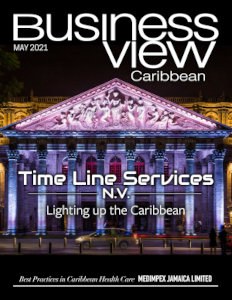Kareisha Cudjoe-Jacob, Operations Director, Altura Caribbean Ltd, Trinidad:
“We’ve always been about technology. We don’t all sit down in a big office, but we try to station our staff onsite. With COVID that hasn’t been as much as we’d like it to be. So we definitely will maintain a strong virtual connection, as we already did have to some extent within our team. It was just ramped up during COVID, and we will maintain that with the clients. Of course, if they would like to have a site visit, and face to face, that’s not a problem. But for us, we think virtual is the way to go, as much as possible. Because a lot of our clients are in Barbados and Guyana, the virtual communication has to be maintained when you have projects of that size off-site.”
Jonathan Sweet, Chief County Administrator, Pulaski County, Virginia, U.S.:
“We are in a relationship business and we deal with citizens of every generation and age group and preference. So, I think it’s going to be forever a combination of face-to-face and virtual communication. Simply because we have folks who enjoy the technology and the convenience to interact using technology. And then we have the people who want to look you in the eye; they want to go back to shaking your hand and being across the table from you. In serving ALL our citizens, we want to be responsive to what they want. So, when everyone’s vaccinated and there’s less fear, and a better understanding, and greater social safety practices, I see going back to face-to-face with some folks and continuing on digitally and electronically with everyone else.”
Sally McMullen, Planning Manager, Perth County, Ontario, Canada:
“We’ve been able to meet people’s needs by communicating through the phone and virtual platforms during the pandemic. But we are planning for a fairly significant public consultation for our new Official Plan, so we’re spending a good chunk of the summer developing some interactive online tools that will help us reach more people. My plan is to engage with the community network (libraries, etc.) that was used to spread important health information, and rely on that now to spread important information about the Official Plan, so people feel informed and can tell us what they need and what they think. We’ve brought some students on board that really bring the creativity to help us build those exciting tools for online engagement. Actually, COVID has forced us to be more creative in engaging with people. And that’s going to continue going forward.”
Mayor Myron Bailey, Cottage Grove, Minnesota, U.S.:
“We tried to make the COVID experience a really positive experience for our community. Especially for the seniors. During the pandemic we had a floral shop named “Rustic Florals” that was creating flower bouquets and donating them to the residents at our seniors’ facilities because they knew they were shut in and they didn’t have any real contact with the outside. Citizens made fun face masks, businesses provided funding to create banners for our streetlights down our main street, highlighting our students that were graduating after a tough year. Which we’re doing again this year. And we had a scavenger hunt in our parks for hidden treasure, and the number of people that were out looking was impressive. It was a great way to discover Cottage Grove. And even though we did this as part of COVID, I think we’re going to continue doing things like that because it really engages our citizens with the parks and trail systems.”
Mark J. Carmen, President & CEO, Modern Aviation, Denver, Colorado, U.S.:
“We’ve all relied heavily on these virtual meetings and they have been effective but I feel that the personal interaction is missing. So you can get things done. And I think people will rely a lot more on virtual meetings because they can be a very effective, efficient tool but it’s not going to replace the in-person interaction. Our company is going to go back to a lot more face-to-face.”



 This information will never be shared to third parties
This information will never be shared to third parties